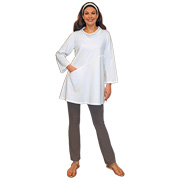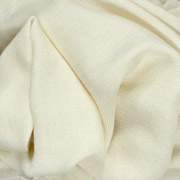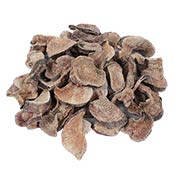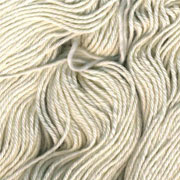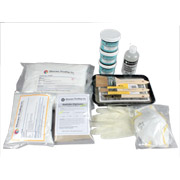GETTING STARTED
Chances are what brought you to this page is a love of color, patterns, and a desire to be creative with fabrics in your home and wardrobe. At Dharma Trading Co. you will find a wonderful selection of products that will allow you to create original designs with fabric paints and dyes on an incredible selection of fabrics, clothing and accessory blanks. Even the simplest design can transform a white scarf or pillow cover into a beautiful one-of-a-kind original!
There are two basic categories of colorants for fabrics: dyes and paints. Dharma’s fabric dyes are for natural fibers (cellulose and proteins such as cottons, rayons, hemps, tencels, silks, wools, feathers, etc.) and one of our dyes will actually dye nylon, as well. Dyes produce more brilliant colors than paints and require chemicals or steaming to set. They actually chemically bond with the fibers and, as a result, leave no stiffness whatsoever on the fabric. They are more complex to work with than fabric paints and call for more caution in handling (like a dust mask, rubber gloves, and proper ventilation). Click here to see our selection of fabric dyes.
Dharma’s fabric paints are pigments suspended in an acrylic medium. They can be used on all natural fibers and most synthetics. They are heat-set with an iron to make them permanent. We also carry a no-heat fixative by Versatex which eliminates the need for iron heat-setting, but requires 4-6 days for curing. Fabric paints actually lay on top of the fibers and as a result, they do stiffen the fabric somewhat but it is less noticeable on heavier fabrics than on lighter ones. Click here to see our selection of fabric paints.
When you place a paintbrush loaded with dye or flowable/diluted paint onto fabric, you will see the color move and spread on the fabric. It spreads more on lighter fabrics such as silk than on heavier fabrics like cotton duck. Sometimes this might not be the effect you’re looking for! There are a variety of ways to control the flow of color:
- Guttas, water-soluble resists, or wax: these are used when distinct graphics or designs are desired. They can be painted, stamped, or applied with an applicator bottle and thin tip. The resist, once dry, creates a barrier which contains and blocks the color. The resist is then removed after the piece has been painted with color and properly set. The area where the resist was will be the original color of the fabric (white, if you started with a white piece). Click here to see our many guttas , resists and waxes. Resist techniques are often used when painting on silk. Click here to learn more about Silk Painting.
- Stop-flow, No flow primers and anti-fusants: if you want the dye or paint to stay exactly where you put it and not spread or move, you can coat your fabric with a primer, let it dry, and then paint your design. Essentially, you’re making your surface behave more like paper than fabric. You then set your dyes or paints appropriately, and then wash the primer out. There are stop-flow products to be used with dyes, and others to be used with paints. Be sure you have the appropriate one! Click here to see our stop-flow products.
- Thickened dyes: You can thicken dyes to make them behave like paints. Thickened dyes are the ideal consistency for direct application techniques such as stamping, printing, and silk screening. Dharma carries two thickener products for fabric dyes: Sodium Alginate, a natural product derived from seaweed, and Superclear, a synthetic thickener. You can also thicken fabric paint, if necessary, with Setacolor thickener. Dharma’s Pigment Dye can be thickened with the Pigment Dye Thickener. It’s important to use the thickener appropriate to the dye or paint you are using.
TECHNIQUES & MATERIALS
We recommend starting simple! The basic supplies that you will need are the dye or paint, some fabric or clothing/accessory to paint on, and some brushes , sponges, or stamps to apply your color with. Working with fabric paints, rather than dyes, is a good place for beginners to start. A nice fabric to practice on would be the Cotton Print Cloth or some bleached muslin; a great first project might be decorating a T-Shirt, painting a scarf or stamping on a tote bag.
Wonderful pieces can be created with simply a paintbrush and a jar of paint but you may want to explore some other ways of patterning and coloring your fabric. You will find helpful instructions and materials lists for each technique by visiting the following starter pages:
Batiking is a technique where melted wax is applied with a brush or applicator on fabric to act as a resist to the dyes or paints that are applied after the wax. The dyes or paints seep into the cracked wax resulting in beautiful crackled effects. For batik supplies click here.
Silk Painting is a technique where dyes or paints are applied to stretched silk, often after guttas or resists have been applied. Beautiful water-color-like effects can be achieved and enhanced with sprinkled salt, watermarks and alcohol. For silk painting supplies click here.
Marbling is a technique where paints are dropped onto a prepared bath that allows the colors to float on the surface. The colors are moved around into swirls and patterns and then the fabric is laid onto the surface of the bath to pick up the patterns. For marbling supplies click here.
Stamping is a printing technique and involves applying paint to a carved or cut shape and impressing the image onto a surface. For stamping supplies click here.
Screen Printing (also called Silk Screening) is a printing technique using a fine mesh screen held in a wooden frame. Ink is pressed through a stencil on the screen mesh using a squeegee to print onto the fabric. For screen printing supplies click here.
Sunpainting is a technique done with Setacolor paints where a wash of diluted paints is applied to fabric, an object (leaf, lace, etc.) is placed on top of the wet paint, and the piece is placed in direct sunlight or under a lamp. When dry, the object is removed and the area underneath will be white! For sunpainting supplies click here.
We have lots of starter kits to get you started, from tie-dye to sun painting. We also carry paint sets and mini-sets for particular brands of paints which allow you to sample a variety of colors of one type of paint. Click here to see our selection of starter kits and paint sets.
Tie Dyeing is a resist technique where fabric is tied with cord or bands before dye or paint is applied. The banded areas resist the color, resulting in interesting patterns. For Tie-dye supplies click here.
BOOKS We have a fabulous book selection for inspiration and instruction. If you’re not sure in which direction you’d like to go, an overall book on a variety of techniques will give you lots of ideas, like Jane Dunnewold’s Complex Cloth. Our book section will guide you to the right book for the technique that interests you.




